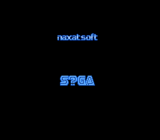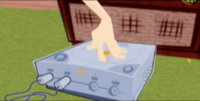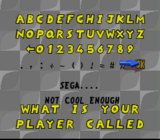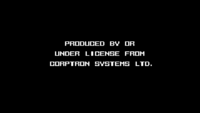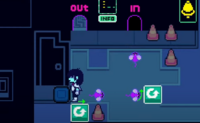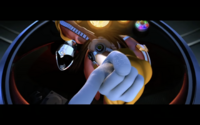Difference between revisions of "References to Sega/Video games"
From Sega Retro
(→PlayStation 4: +Last of Us Part II) |
|||
| Line 69: | Line 69: | ||
|style="vertical-align:top"|In the [[PlayStation 3]] port of ''[[wikipedia:No More Heroes (video game)|No More Heroes]]'', the [[Nintendo 64]] in Travis' apartment has been replaced with a [[Mega Drive]] [[Mega-CD|CD]] [[Sega 32X|32X]] combo, with accompanying control pad.{{ref|https://forums.sonicretro.org/index.php?threads/sega-references-in-pop-culture.22988/page-6#post-810936}} | |style="vertical-align:top"|In the [[PlayStation 3]] port of ''[[wikipedia:No More Heroes (video game)|No More Heroes]]'', the [[Nintendo 64]] in Travis' apartment has been replaced with a [[Mega Drive]] [[Mega-CD|CD]] [[Sega 32X|32X]] combo, with accompanying control pad.{{ref|https://forums.sonicretro.org/index.php?threads/sega-references-in-pop-culture.22988/page-6#post-810936}} | ||
|[[File:References NoMoreHeroesParadise PS3 MegaDriveCD32X.png|200px]] | |[[File:References NoMoreHeroesParadise PS3 MegaDriveCD32X.png|200px]] | ||
| + | |} | ||
| + | |||
| + | ==PlayStation 4== | ||
| + | {| class="prettytable sortable" style="width:100%" | ||
| + | !Game | ||
| + | !Release date | ||
| + | !Description | ||
| + | !width="200px"|Screenshots | ||
| + | |- | ||
| + | |style="vertical-align:top"|''The Last of Us Part II'' | ||
| + | |style="vertical-align:top"|2020-06-19 | ||
| + | |style="vertical-align:top"|One of the more memorable locations visited throughout the course of the game is the decaying [[GameWorks Seattle]].{{ref|https://www.escapistmagazine.com/the-last-of-us-part-ii-arcade-the-turning-is-a-monument-to-moving-on/}} | ||
| + | |[[File:References_PS4_LastofUsII_GameWorksSeattle.jpeg|200px]] | ||
|} | |} | ||
Revision as of 08:28, 17 October 2022
- Back to: References to Sega.
The following is a list of references to Sega in video games.
For references specific to Sonic the Hedgehog, see References to Sonic in video games.
Contents
Family Computer
| Game | Release date | Description | Screenshots |
|---|---|---|---|
| Summer Carnival '92 Recca (サマーカーニバル'92 烈火) | 1992-07-17 | An unused introduction sequence with a familiar "S?GA" logo and jingle exists in the game. It comes onto the screen, explodes and is replaced with a "Nint?ndo" one.
To re-enable the sequence, use the Game Genie codes IEUSTGAA, AXUSYKGG, NKKIAGEI and KSKIPGUI. Then hold START before the Naxat Soft logo appears. |
Game Boy
| Game | Release date | Description | Screenshots |
|---|---|---|---|
| Pocket Monsters: Red / Pocket Monsters: Green | 1996-02-27 | Development material for the released game reveals the first generation of Pokémon games was originally intended to include a trainer by the name of Jack - a reference both in name and design to the popular Virtua Fighter character Jacky. Said trainer was likely intended to be the trainer counterpart to the virtual polygon Pokémon Porygon.[1][2] |
Nintendo 3DS
| Game | Release date | Description | Screenshots |
|---|---|---|---|
| Super Smash Bros. for Nintendo 3DS | 2014-09-13 | Bayonetta can perform the attack Tetsuzankou (performed by Virtua Fighter 2's Akira), which uses the same attack quote of “Juunen Hayaindayo!"[3] |
PlayStation 2
| Game | Release date | Description | Screenshots |
|---|---|---|---|
| Multiple High Voltage Software games | 2006 | The introductory cutscene which accompanies the developer's logo features a child playing a Dreamcast.[4] |
PlayStation 3
| Game | Release date | Description | Screenshots |
|---|---|---|---|
| No More Heroes: Heroes' Paradise | 2010-04-15 | In the PlayStation 3 port of No More Heroes, the Nintendo 64 in Travis' apartment has been replaced with a Mega Drive CD 32X combo, with accompanying control pad.[5] | 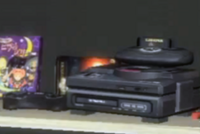
|
PlayStation 4
| Game | Release date | Description | Screenshots |
|---|---|---|---|
| The Last of Us Part II | 2020-06-19 | One of the more memorable locations visited throughout the course of the game is the decaying GameWorks Seattle.[6] | 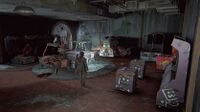
|
Super Famicom
| Game | Release date | Description | Screenshots |
|---|---|---|---|
| Uniracers/Unirally | 1994-12 | If the user attempts to call themselves "SEGA" (or "SONIC"), a "NOT COOL ENOUGH" message appears. |
Wii U
| Game | Release date | Description | Screenshots |
|---|---|---|---|
| Super Smash Bros. for Wii U | 2014-11-21 | Bayonetta can perform the attack Tetsuzankou (performed by Virtua Fighter 2's Akira), which uses the same attack quote of “Juunen Hayaindayo!"[3] |
Windows PC
| Game | Release date | Description | Screenshots |
|---|---|---|---|
| Duck Game | 2015-06-04 | The game draws heavy influence from the Sega Mega Drive in its presentation, even displaying a parody of the TradeMark Security System screen at startup while using a font based on the screen for its menus. Its soundtrack heavily uses instruments and samples from a variety of Mega Drive games, including Comix Zone, ToeJam & Earl, Earthworm Jim and Sonic the Hedgehog 3. | |
| The Lab | 2016-04-05 | One of the game's "relics" is the arcade game Xortex 26XX, which boasts a name and cabinet design inspired by Zaxxon.[7] | 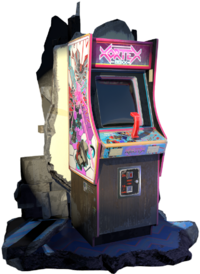
|
| Deltarune: Chapter 2 | 2021-09-17 | One of the game's areas features multiple Chu Chu Rocket-inspired puzzles.[8] |
Xbox 360
| Game | Release date | Description | Screenshots |
|---|---|---|---|
| Project Gotham Racing 3 | 2005-11-22 | As the game attempts to recreate real-world locations, GameWorks Las Vegas (then owned by Sega) is fully modelled. GameWorks is also advertised throughout the game (including in London and Tokyo, despite GameWorks not trading in the UK or Japan). | |
| Project Gotham Racing 4 | 2007-10-02 | Las Vegas returns from Project Gotham Racing 3, along with GameWorks Las Vegas. | |
| Sonic Unleashed | 2008-11-20 | During the game's introductory cutscene, a Dreamcast in briefly seen within Dr. Eggman's Egg Mobile. | |
| Bayonetta | 2009-10-29 | Bayonetta can perform the attack Tetsuzankou (performed by Virtua Fighter 2's Akira), which uses the same button combination and attack quote of “Juunen Hayaindayo!"[3] |
Xbox Live Arcade
| Game | Release date | Description | Screenshots |
|---|---|---|---|
| Game Type | 2011 | One of the stage backgrounds features a video game system similar to a Dreamcast. | 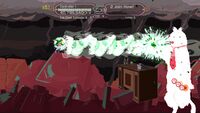
|
References
- ↑ @tracker_td on Twitter
- ↑ The Cutting Room Floor: Development:Pokémon Red and Blue
- ↑ 3.0 3.1 3.2 https://www.destructoid.com/--534711.phtml
- ↑ https://forums.sonicretro.org/index.php?threads/sega-references-in-pop-culture.22988/page-7#post-819467
- ↑ https://forums.sonicretro.org/index.php?threads/sega-references-in-pop-culture.22988/page-6#post-810936
- ↑ https://www.escapistmagazine.com/the-last-of-us-part-ii-arcade-the-turning-is-a-monument-to-moving-on/
- ↑ https://forums.sonicretro.org/index.php?threads/sega-references-in-pop-culture.22988/page-7#post-857157
- ↑ @digi_valentine on Twitter
